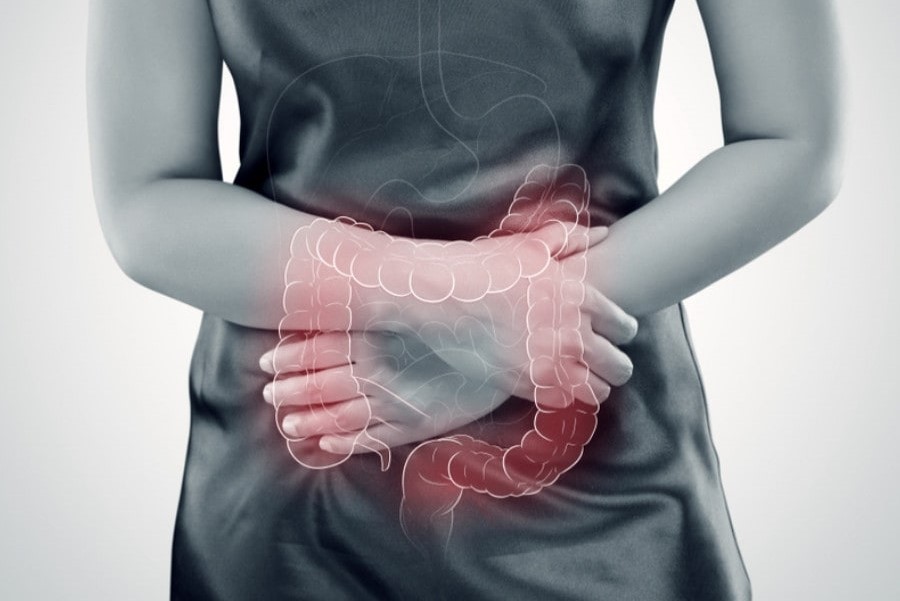
Ulcerative colitis: what are the typical symptoms of the intestinal disease?
Ulcerative colitis causes inflammation and ulcers along the lining of your intestines. It’s one of the two primary types of inflammatory bowel disease (IBD), along with Crohn’s disease
People with this disease often experience symptoms like a frequent need to have a bowel movement, diarrhea, and blood in their stools.
Symptoms tend to appear in flare-ups and can go into recession for weeks to years at a time.
Common symptoms of ulcerative colitis
The severity of colitis symptoms varies between people.
Those with the mildest form of ulcerative colitis experience a normal number of stools per day and have no noticeable blood in their stools.
Ulcerative c. tends to come on slowly and get worse over time as inflammation spreads.
Getting proper treatment can help prevent symptoms from getting worse.
Minimizing stress can also help prevent flare-ups.
Below are some of the most common symptoms of ulcerative colitis
Diarrhea and rectal bleeding
People with this colitis often experience watery diarrhea as well as frequent and sudden urges to have a bowel movement.
For some people, the urge to have a bowel movement may occur so suddenly that it significantly disrupts their daily life.
Some people need to have a bowel movement more than 10 times per day.
You may notice blood, pus, or mucus in your stools.
You may also experience rectal bleeding if you’re having a flare-up.
Blood comes from ulcers along the surface of your rectum.
If you have uncontrollable diarrhea or notice blood in your stool, you should see a doctor.
Diarrhea caused by this colitis can lead to medical emergencies like severe dehydration, a perforated colon, or sepsis.
Abdominal and rectal pain
People with ulcerative c. often experience rectal or abdominal pain.
Having a large amount of abdominal pain may be a sign that you’re having a flare-up or that your condition is getting worse.
Pain can range from mild to severe and may also affect your rectum.
Pain may be accompanied by persistent muscle spasms and cramping.
Fever
About 40 percent of people with this colitis develop a fever.
Most of the time, the fever is chronic and low grade.
If you develop a fever over 103ºF (39ºC), you should seek emergency medical attention.
Anemia
Frequent bleeding can result in anemia (a low number of red blood cells).
Anemia leads to fatigue and other symptoms like pale skin, problems concentrating, and shortness of breath.
It’s a good idea to get your iron levels checked every 6 to 12 months if you have ulcerative c.
If you develop difficulty breathing or chest pain, you should seek immediate attention.
Additional symptoms
This colitis can lead to a number of other symptoms.
Some people may develop constipation, although it’s not as common as diarrhea.
Systemic inflammation throughout your body can lead to general symptoms like:
- eye inflammation
- joint pain
- joint swelling
- mouth swelling
- skin rashes
Symptoms by type of ulcerative colitis
Ulcerative colitis can be broken into subtypes depending on where the inflammation is in your colon.
Ulcerative proctitis. Ulcerative proctitis affects your rectum, the part of your colon closest to your anus. It’s the most common type and affects 30 to 60 percentTrusted Source of people with ulcerative colitis.
Proctosigmoiditis. Proctosigmoiditis causes inflammation of your rectum and the lower part of your colon, called the sigmoid colon.
Left-sided colitis. Left-sided colitis affects your rectum, your sigmoid colon, and the descending part of your colon on the left side of your body.
Pancolitis. Pancolitis affects your entire colon.
Ulcerative colitis flare-up symptoms
Ulcerative c. tends to alternate between periods of mild and no symptoms to flare-ups that cause a worsening of the symptoms above.
The exact cause of flare-ups isn’t completely known, but it’s thought certain food triggers and stress could play a role.
When this colitis flares up, you’re at a heightened risk of developing severe complications or needing emergency medical attention.
Possible complications include:
- toxic megacolon (expansion of your colon)
- severe bleeding
- dehydration
- increased risk of blood clots
Early symptoms of ulcerative colitis
In a 2019 study published in BMC Gastroenterology, researchers surveyed 483 people with IBD.
The researchers found that the most common initial symptoms in people with ulcerative colitis were bloody bowel movements (86.6 percent) and diarrhea (86.5 percent).
They found the most common initial symptoms in people with Crohn’s disease were fatigue and abdominal pain.
Ulcerative colitis symptoms by sex
This colitis is an autoimmune disorder.
According to research, about 80 percent of people with autoimmune disorders are female.
However, IBD seems to affect all people similarly.
Some studies show ulcerative colitis is slightly more prevalent in men, but most studies show no difference.
Symptoms of ulcerative colitis are similar regardless of sex, but unique issues may occur for some people.
Rectovaginal fistulas may develop, which are holes that allow stool to leak from the bowel to the vagina.
Ulcerative colitis may also lead to irregular periods or increased menstrual pain. Women may also be at a higher risk of anemia and osteoporosis, and ulcerative colitis can further increase this risk.
How long do ulcerative colitis symptoms last?
Ulcerative colitis flare-ups can last from days to weeks.
They can happen as close together as weeks apart or you may go years without a flare-up.
Taking medication, avoiding trigger foods, and managing stress can help reduce the frequency and severity of your flare-ups.
Read Also:
Emergency Live Even More…Live: Download The New Free App Of Your Newspaper For IOS And Android
Wales’ Bowel Surgery Death Rate ‘Higher Than Expected’
Irritable Bowel Syndrome (IBS): A Benign Condition To Keep Under Control
Colitis And Irritable Bowel Syndrome: What Is The Difference And How To Distinguish Between Them?
Ulcerative Colitis: Is There A Cure?


